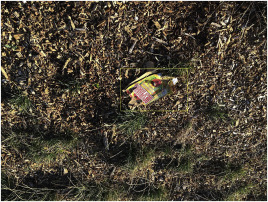Elsevier, Case Studies in Chemical and Environmental Engineering, Volume 2, September 2020
Data in 2016 and 2017 has shown that most of Malaysia's river water quality was in Water Quality Index Class II and Class III. The implementation of the Movement Control Order (MCO) has restricted business activities, human movements as well as anthropogenic activities. The sudden decline in human activities has directly impacted the river water quality. Several observations conducted by reporters of local newspapers, reports released by the Department of Environment (DoE) and Ministry of Environment and Water have shown positive changes in water river quality.
Elsevier, Case Studies in Chemical and Environmental Engineering, Volume 2, September 2020
This review goal is to reflect on the challenges and prospects for water quality in the face of the pandemic caused by the new SARS-CoV-2 coronavirus (COVID-19). Based on the information available so far, the detection of SARS-CoV-2 RNA in wastewater has raised interest in using it as an early warning method, to detect the resurgence of infections and to report the risk associated with contracting SARS-CoV-2 in contact with untreated water or inadequately treated wastewater is discharged.
Elsevier, Case Studies in Chemical and Environmental Engineering, Volume 2, September 2020
Water pollution is one of the serious threats in the society. More than 8 million tons of plastic are dumped in the oceans each year. In addition to that beaches are littered by tourists and residents all around the world. It is no secret that the aquatic life ecosystem is at a risk and soon the ratio of plastic/waste to the marine life particulary fish will be 1:1. Hence, in this paper, we have proposed a dataset known as AquaTrash which is based on TACO data set.
Elsevier, Advances in Radiation Oncology, Volume 5, 1 September 2020
Purpose: Poor nutrition is highly implicated in the pathogenesis of cancer and affects the survival of patients during and after completion of definitive therapies. Mechanistic evidence accumulated over the last century now firmly places dysregulated cellular energetics within the emerging hallmarks of cancer. Nutritional intervention studies often aim to either enhance treatment effect or treat nutritional deficiencies that portend poor prognoses.
Elsevier, Materials Today Sustainability, Volume 9, September 2020
CeO2 shows unique catalytic properties by an acid–base bifunctionality as well as redox properties. The acid–base bifunctional properties of CeO2 have been applied to the non-reductive CO2 conversion with alcohols such as dimethyl carbonate (DMC) synthesis from CO2 and methanol. CeO2 shows very high selectivity to DMC; however, the yield of DMC is strongly limited by the equilibrium. The combination of the synthesis of organic carbonates from CO2 and corresponding alcohols with suitable H2O removal methods can enhance the yield of the organic carbonates beyond the equilibrium limitation.
Elsevier, Materials Today Sustainability, Volume 9, September 2020
Manufacturing challenges are anticipated to become worse in the coming decades owing to global material and energy constraints combined with environmental issues associated with conventional processes. Addressing these difficulties calls for a significant amount of research to be conducted to establish robust new technologies that are cost-effective and energy efficient, while at the same time minimizing environmental pollution.
Elsevier, Materials Today Sustainability, Volume 9, September 2020
Solar light-driven water splitting provides a promising way to store and use abundant solar energy in the form of gaseous hydrogen which is the cleanest chemical fuel for mankind; therefore this field has been attracting increasing attention over the past decades.
Elsevier, Physiology and Behavior, Volume 223, 1 September 2020
Alzheimer's disease (AD) is associated with cognitive deficits and behavioral disorders such as anxiety and depression. Recent clinical and experimental studies have demonstrated that swimming exercise could be a potential therapy for cognitive and behavioral disorders. The prevalence of anxiety and depression is increasing among patients with AD; hence, further studies are needed to develop therapies for these behavioral abnormalities.
Elsevier, EBioMedicine, Volume 59, September 2020
Background: Cholinergic neuronal loss is one of the hallmarks of AD related neurodegeneration; however, preclinical promise of α7 nAChR drugs failed to translate into humans. CHRFAM7A, a uniquely human fusion gene, is a negative regulator of α7 nAChR and was unaccounted for in preclinical models. Methods: Molecular methods: Function of CHRFAM7A alleles was studied in vitro in two disease relevant phenotypic readouts: electrophysiology and Aβ uptake. Genome edited human induced pluripotent stem cells (iPSC) were used as a model system with the human context.

